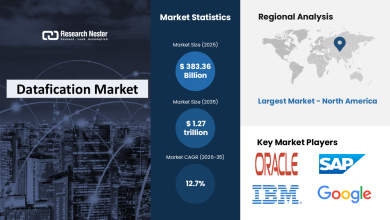
In the fast data era characterized by the exponential growth of data volumes and the need for real-time insights, edge computing emerges as a pivotal technology reshaping data processing architecture. By decentralizing computation and bringing it closer to data sources, edge computing minimizes latency and bandwidth usage, enhancing overall system efficiency.
According to a report by IDC, by 2023, over 50% of new enterprise IT infrastructure will be deployed at the edge. This trend underscores the growing importance of edge computing in modern IT strategies. Edge devices, from sensors and smartphones to IoT gateways, collect and preprocess data locally before transmitting it to centralized servers or the cloud. This local processing capability reduces latency and alleviates network congestion, making it ideal for applications requiring real-time responses.
The automotive industry, for instance, relies heavily on edge computing to enable autonomous vehicles. By processing sensor data locally, vehicles can make split-second decisions without relying solely on cloud connectivity, ensuring safety and responsiveness on the road.
Moreover, edge computing enables efficient utilization of network bandwidth and cloud resources by filtering and aggregating data before transmission. This reduces the strain on centralized infrastructure, enhances scalability, and lowers organizational operational costs.
In a nutshell, the strategic adoption of edge computing unlocks the full potential of fast data applications, enabling industries to derive timely insights and drive innovation in the digital age.
Applying Edge computing
Edge computing, a decentralized approach to data processing, is revolutionizing diverse industries by bringing computation closer to data sources. In applications like IoT, autonomous vehicles, and smart cities, edge computing reduces latency and bandwidth consumption, enabling real-time insights and responses.
By distributing processing power to the network’s edge, it enhances scalability and reliability while minimizing dependence on centralized servers. Edge devices preprocess data locally, reducing the burden on cloud infrastructure and ensuring efficient resource utilization. With its ability to handle massive data streams and enable rapid analysis, edge computing empowers organizations to harness the full potential of emerging technologies in the fast data era.
Transforming data dynamics in key sectors
Edge computing is invaluable whenever data speed, volume, and privacy are crucial considerations. Healthcare, the public sector, retail, and finance are exploring its implementation to cut latency, enhance efficiency, and achieve better operational results. By the end of 2025, 75 percent of the generated data will be gathered, analyzed, and processed at the Edge.
Revolutionizing healthcare through AI-driven edge technologies
Let’s zoom out to an industry-wide perspective, beginning with the healthcare sector where timing is paramount. As per MIT Technology Review, 30 percent of the world’s stored data originates from healthcare and life sciences.
At present, AI-infused edge technologies are actively contributing to less invasive surgeries, minimizing radiation exposure in X-ray machines, and monitoring patients prone to falls, thereby making a significant impact. In the United States, each hospital bed is linked to 10-15 edge devices, constantly monitoring the real-time status of patients. Projections indicate that 75 percent of medical data will originate at the edge.
Citing another example, AI-driven edge technologies are revolutionizing healthcare by enhancing patient care and optimizing workflows. These technologies leverage edge computing to process data closer to the point of care, minimizing latency and ensuring real-time insights. By analyzing patient data at the edge, AI algorithms can detect anomalies, predict medical emergencies, and personalize treatment plans.
Edge devices such as wearable monitors and IoT sensors enable continuous health monitoring and early intervention, improving patient outcomes. Moreover, AI-driven edge technologies streamline administrative tasks, reduce healthcare costs, and enhance resource allocation. With their ability to provide timely, data-driven decision support, these innovations are transforming healthcare delivery in the digital age.
Transforming retail with Edge computing
The convergence of Retail and Edge Computing is becoming more important, spanning both online and brick-and-mortar establishments. For retailers, Edge technology is key to unlocking rapid and cost-efficient data use. Teamed up with 5G, it guarantees swifter data transfers, lower latency, and heightened resilience against network outages. It also offers retailers a greater say in where their data is processed.
Tailored marketing campaigns and personalized product suggestions driven by this technology foster customer loyalty and repeat business. In real-time, Edge AI monitors Point of Sale (PoS) and online transactions, maintaining inventories, averting stockouts, and contributing to cost savings.
It proves particularly impactful in sectors, such as beauty and apparel, where the incorporation of augmented reality “virtual try-ons” for makeup or clothing can revolutionize the customer experience. Also, its application extends to theft prevention in retail, boosting profitability. Implementing this technology in smart shelves and robotics for inventory management enhances efficiency and diminishes labor costs.
Transforming financial services innovation
In the finance industry, edge computing opens doors to better customer service, cost reduction, and regulatory compliance. Through quick and efficient data processing, it personalizes services, turning real-time analytics into tailored offerings that fit customer needs.
High-frequency trading firms leverage edge computing to optimize profits on high-volume, low-margin trades. By bringing computation and data storage closer to the data source, Edge Computing mitigates latency issues, providing a competitive edge in rapid order execution.
Banks grapple with the challenge of safeguarding extensive customer data, rendering them susceptible to cyber threats. As a countermeasure, banks are harnessing edge computing for proactive fraud detection in real-time.
By deploying edge servers at key touchpoints, such as ATMs, point-of-sale systems, and online platforms, banks can monitor transactions, promptly identify anomalies, and flag potentially fraudulent activities. Analyzing data at the edge enables swift responses to security threats, averting financial losses, and ensuring the safety of customer funds and personal information.
By situating edge servers close to their mobile banking applications, banks enable real-time processing of transactions, account updates, and other operations. Edge computing provides the advantage of immediate access to account information, facilitating on-the-go transactions and enhancing the overall mobile banking experience.
Embracing Edge Technology for Future Growth
Recent findings from an industry report highlight the potential acceleration of innovation through Edge computing. The research suggests that companies transitioning from ad hoc to integrated approaches, leveraging the synergy of cloud, data, and AI, are poised to unlock new revenue opportunities. The integration is crucial for cost-effective advancement in edge innovation and the delivery of distinct and enhanced experiences.
For companies, the adoption of Edge computing is viewed as a transformative force capable of revitalizing their business models. Recognizing the pivotal role of strategic thinking, scalable implementation, and the enhancement of edge capabilities emerges as crucial for unlocking a wealth of value and seizing unprecedented opportunities in the evolving landscape of technology and business.
Embracing edge technology presents a paradigm shift in modern computing architectures, offering unparalleled opportunities for future growth across diverse industries. Edge computing decentralizes data processing and analysis, bringing computation closer to data sources and end-users. By distributing computing power to the network’s edge, latency is minimized, enabling real-time data insights and responses critical for mission-critical applications.
Furthermore, edge technology facilitates personalized customer experiences through localized data analysis, driving customer engagement and loyalty. Risk management and compliance benefit from immediate data insights at the edge, enhancing fraud detection and regulatory adherence.
The future growth potential of edge technology lies in its ability to unlock new possibilities in automation, IoT, and AI-driven applications. Autonomous vehicles, smart cities, and healthcare systems leverage edge computing to deliver seamless, responsive services while minimizing reliance on centralized infrastructure and thrive in an increasingly connected and data-driven world.




